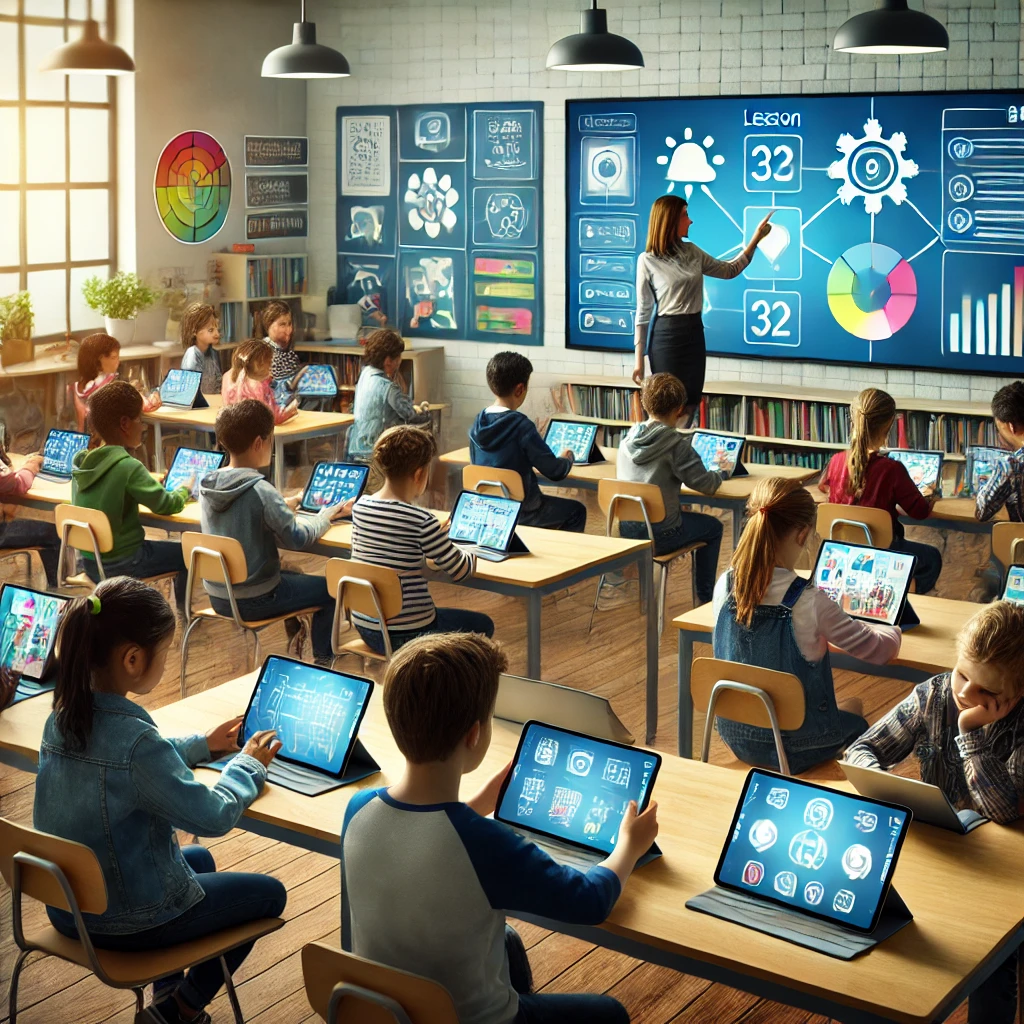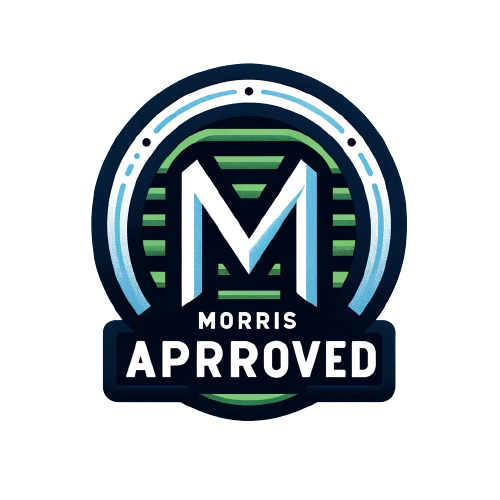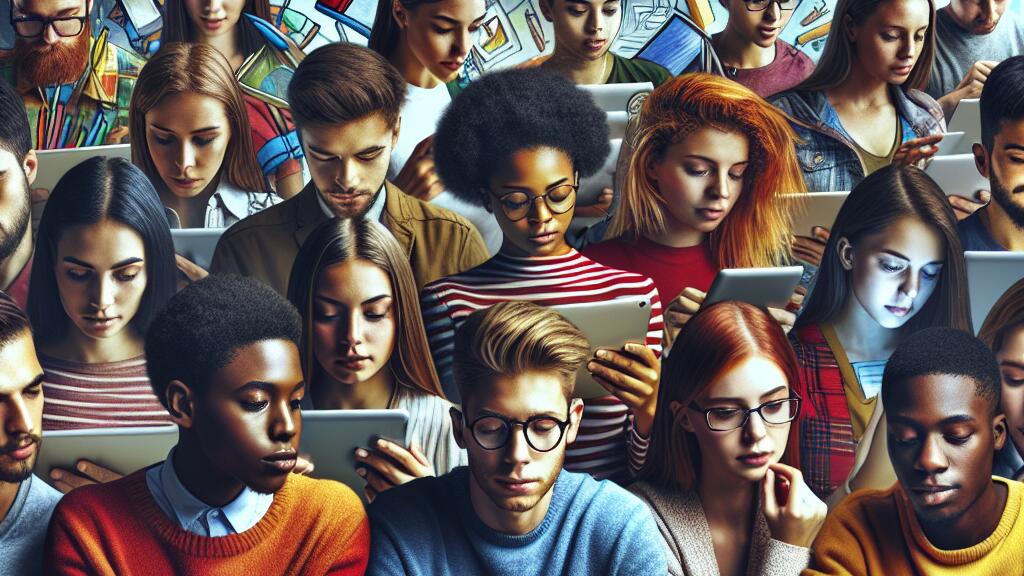Table Of Contents
The Impact of Tablets on Education: Transforming Learning in the Digital Age
Key Takeaways
- Influence of tablets on scholarly settings and comprehending devices in the academic realm
- Advantages of tablets in educational surroundings
- Obstacles linked to tablet incorporation
- Effect of tablets on instructional techniques
- Practical uses of tablets in learning environments
The Impact Of Tablets On Education | Understanding Tablets in the Educational Landscape
Tablets have transformed the educational landscape, significantly influencing the way students and teachers interact with learning materials. The impact of tablets on education goes beyond mere access to information; these tablet devices, including Samsung tablets and graphic tablets, foster a unique engagement that traditional methods often lack. Tablet computers and tablet PCs serve as powerful tools for educational technology, enabling personalized learning and enhancing the delivery of content. With the rise of tablet personal computers in classrooms, educators can leverage various applications to promote interactivity and collaboration among students. Overall, the integration of tablet devices into the educational framework has been a pivotal development in modern education, reshaping pedagogical approaches and enhancing the learning experience.
| Device Type | Key Features | Education Benefits |
|---|---|---|
| Tablet Computers | Lightweight, Touchscreen, Portable | Improved access to resources, Engaging interfaces |
| Graphic Tablets | Pressure-sensitive stylus, Digital drawing capability | Enhanced creativity, Better visualization of concepts |
| Tablet PCs | Full PC functionality, Detachable keyboards | Versatile learning environments, Increased functionality |
| e-Readers | Long battery life, E-ink technology | Focus on reading, Reduced eye strain |
The Impact of Tablets on Education | Overview of Tablets in Classrooms
Tablets have revolutionized classrooms by integrating educational technologies that enhance learning experiences. The widespread use of devices like the Apple iPad and iPad Mini has transformed how students access information. With digital textbooks and e-textbooks readily available, students no longer rely solely on traditional textbooks. This shift supports secondary education and higher education institutions in updating their curricula to include online educational resources. The impact of tablets on education is evident through increased academic success, particularly as they cater to various learning styles and needs.
The incorporation of tabletPCs in classrooms has had a significant influence on teaching methods and student engagement. For students with special educational needs, tablets offer tailored applications that help meet specific learning objectives. Educators can leverage the interactive features of tablets to create immersive learning environments. This integration fosters a more collaborative atmosphere, allowing students to participate actively in their education. Overall, the impact of tablets on education reflects a broader trend towards embracing technology as a means to improve learning outcomes.
Historical Evolution of Tablets in Education
Tablets have transformed the educational landscape since their introduction, marking a significant shift in teaching and learning practices. Previously, classrooms relied heavily on traditional methods and resources. The advent of handheld devices, such as tablets and smartphones, enhanced technology-enhanced learning, providing students with a wealth of resources at their fingertips. This evolution has particularly influenced subjects like computer science education, where interactive applications foster engagement. The prevalence of digital textbooks and ebooks has contributed to improved literacy and digital literacy among undergraduate students.
The integration of tablets into educational settings has progressed alongside the rise of mobile devices. Initial uses focused on basic functionality, later expanding to include a range of pedagogical tools that facilitate personalized and collaborative learning experiences. Physical education has also embraced tablet technology, utilizing apps that promote fitness tracking and performance monitoring. The Impact of Tablets on Education is evident in how these devices not only support learning but also transform the way students interact with information and each other.
The Benefits of Tablets in Learning Environments
Tablet devices have revolutionized the landscape of education, impacting various levels, including early childhood education and universities. By utilizing tablets, educators can enhance engagement and promote interactivity among students, creating a more immersive learning environment. Mobile technology facilitates mobile-assisted language learning, allowing tablet students to access resources at their fingertips. Many tablets can replace traditional computers in the classroom, enabling seamless integration of technology during exams and daily lessons. The impact of tablets on education is profound, as they provide diverse educational resources, fostering a dynamic atmosphere for collaboration and individualized learning experiences. This shift in how students interact with content underscores the importance of technology in modern education.

Enhancing Engagement and Interactivity
Tablets have revolutionized the learning experience in educational settings, especially in primary classrooms. With the introduction of new tablets, such as android-based tablets, educators have witnessed significant changes in student engagement levels. These devices not only facilitate easy and intuitive access to educational content but also provide an organized environment that supports tablet-assisted learners. Studies indicate that tablets help students to learn better and faster in the classroom, transforming attitudes towards technology and learning.
The use of tablet-supported courses promotes interactive learning, allowing students to participate actively and collaboratively in their education. This tablet-based teaching approach enhances the educational experience by encouraging creativity and critical thinking. As schools increasingly adopt tablets to go paperless, they create a more sustainable learning environment. Previous tablets laid the groundwork for this shift, and the impact of tablets on education continues to redefine how students and teachers interact with learning materials.
Access to Educational Resources and Materials
Tablet technology revolutionizes access to educational resources, making a wealth of information readily available at students’ fingertips. The tablet phenomenon has enabled educators to implement tablet-based instruction that enhances learning experiences. Lightweight tablets facilitate tablet-based activities, allowing for interactive and engaging learning environments. With planned tablet usage, students can easily navigate through various educational materials, harnessing the tablet-assisted effects to improve their understanding of complex concepts.
Tablet-based learning promotes a diverse range of instructional strategies tailored to individual needs. Through tablet guidance, educators can curate resources that align with different learning objectives. The impact of tablets on education also extends to developing multitasking abilities in students, as they manage multiple applications and resources simultaneously. As data–tablets become more integrated into classrooms, the effectiveness of tablet-assisted instruction continues to reshape traditional teaching approaches, fostering a more inclusive educational landscape.
Challenges Associated with Tablet Integration
The integration of tablet computer use in classrooms presents various challenges that educators must navigate. While tablet-assisted learning offers numerous benefits, such as increased engagement and access to educational resources, it can also lead to distractions, particularly with the plethora of entertainment available on tablet screens. This can make tablet-based discipline a concern for teachers who wish to maintain focus during lessons. The educational apps that enhance learning may sometimes be overshadowed by the potential for students to veer towards less productive uses of their devices. Equity and accessibility issues arise as well, with disparities affecting tablet user groups depending on socioeconomic status and access to technology-enhanced education. The impact of tablets on education is profound, yet navigating these challenges requires a balanced approach from tablet makers and educators alike, ensuring that tablet-assisted learning achievements are maximized while minimizing the risks associated with student devices.

Distraction and Screen Time Concerns
The integration of tablets into the education system raises concerns regarding distractions and excessive screen time. Research highlights the potential for tablet-based instruments to divert students’ attention from academic tasks. While educational apps bolster students’ engagement, the challenge lies in maintaining focus amidst the plethora of entertainment options available. This concern is especially significant when considering the differences between traditional paper-and-pencil methods versus tablet-based learning contexts, where a distraction can be just a tap away.
Managing screen time is crucial for maximizing the educational benefits of tablet use. Studies suggest that collaborative tablet use can enhance learning experiences; however, it may also lead to over-reliance on technology, impacting students’ ability to concentrate. Educational technology research indicates that effective utilization of pen-based tablets or tablet-integrated phonics can support various education levels. Balancing the innovative potential of tablets with the need to minimize distractions is essential for educating students in a meaningful way.
Equity and Accessibility Issues
The rapid adoption of touchscreen tablets in educational settings has underscored significant equity and accessibility issues. Not all students have equal access to tablet computers, which affects their ability to engage with digital textbooks and educational applications. This digital divide is evident in varying socioeconomic backgrounds, where some students thrive with the latest educational app designs while others struggle with outdated technology. Educational research highlights that this disparity can hinder the overall learning experience and outcomes, leading to increased gaps in achievement among different student groups.
The use of pen-based tablet computers offers unique advantages in technology-based teaching but also introduces complexities related to equity. While pen-based tablet groups facilitate personalized learning and hands-on interaction, not every student can benefit equally from these tools. Opinion among educators varies on best practices for implementing tablet computer groups, with some advocating for inclusive strategies that address the needs of all learners. As The Impact of Tablets on Education continues to evolve, ensuring access for all students remains a critical challenge that educational sciences must tackle.
The Impact of Tablets on Teaching Methods
The integration of tablets into the education sector has transformed teaching methods across various educational stages. Educators can now tailor their approaches to meet individual educational needs, utilizing educational resources that were once confined to heavy textbooks. For instance, university students benefit from tablet-based geometry learning, which provides interactive and engaging ways to grasp complex concepts. Features like tablet flashcards enhance academic usage, allowing learners to review materials efficiently. With the availability of free iPads and included smartphones, students have unprecedented access to educational documents and tools, ultimately influencing their academic performance and the overall education process. The impact of tablets on education reflects a shift towards more personalized and collaborative learning experiences, fostering an environment where students can thrive.
Facilitating Personalized Learning Approaches
The use of tablets in educational settings has significantly transformed personalized learning approaches. By incorporating devices like iPads, educational institutions can tailor learning experiences to meet individual student needs. Unlike standard textbooks, e-textbooks offer interactive features that engage students and provide immediate feedback. This technology allows teachers to monitor progress and adjust instructional strategies based on students’ learning effects. With the iPad button providing access to various educational apps, educators can create customized lesson plans across different subjects, enhancing students’ understanding and retention of information.
The Impact of Tablets on Education extends to various programs specifically designed for eFL education, where tablets facilitate a more adaptable and engaging learning environment. Educational centers can implement strategies that involve design technology students in creating digital content tailored to their peers. By utilizing tablets, students can explore diverse learning paths that resonate with their interests, leading to improved pedagogical achievements. This shift allows for a more inclusive approach to education, ensuring all students have the tools they need to succeed academically.
Supporting Collaborative Learning Experiences
Tablets have transformed the way students collaborate in many classrooms. The Impact of Tablets on Education is evident as mobile learning technology fosters teamwork and communication among students. For instance, with initiatives like the one-to-one iPad program, every student engages with digital tools, facilitating group projects and discussions. In secondary education centers, courses emphasize collaborative learning experiences, replacing traditional textbooks with interactive resources. These advancements not only make learning more engaging but also prepare students for online exams and real-world scenarios.
The utilization of tablets supports collaborative learning by bridging gaps in university services and enabling professional course students to connect effortlessly. The flexibility of mobile learning use allows students to work together on projects from various locations. These educational stages have witnessed a shift where the synchronization of information becomes crucial. As students navigate shared platforms and digital content, the transformation from traditional textbooks to interactive resources shapes a new approach to team-based learning in classrooms.
- Enhanced communication tools enable instant feedback and brainstorming.
- Access to diverse resources improves the quality of group projects.
- Increased engagement through interactive activities fosters deeper learning.
- Real-time collaboration tools keep students connected, regardless of location.
- Tablets facilitate easy sharing of materials and ideas among team members.
- Collaborative apps promote peer editing and collective problem-solving.
- Students develop critical teamwork skills essential for future careers.
RealWorld Applications of Tablets in Education
Tablets have transformed conventional classrooms into dynamic learning environments, showcasing The Impact of Tablets on Education through various real-world applications. By integrating a digital curriculum, educational solutions leverage many devices to enhance students’ ability to engage with content interactively. These devices facilitate the use of a digital textbook playbook and recommended apps that cater to diverse learning styles. Many studies highlight the correlation between tablet use and improved student achievement, illustrating how students today benefit from the ability to access quality education resources anytime and anywhere. Such advancements reflect a significant shift in teaching methodologies, making learning more accessible and personalized.
Case Studies of Successful Tablet Programs
Successful tablet programs have reshaped the educational landscape, highlighting The Impact of Tablets on Education. These programs have been instrumental in increasing student classroom participation. By integrating e-learning technology, schools have provided students with opportunities to engage with lessons in ways that traditional methods often cannot. Many students find that using tablets allows for a more interactive experience, facilitating both creativity and collaboration. Educational decision makers recognize the potential of this new technology, especially as it can address various instructional challenges frequently faced in different teaching environments.
Several case studies illustrate the positive correlation between tablet use and academic performance. Schools that effectively implement tablets have noted significant improvements in academic progress among students. The ability to access a wealth of resources and streamlined communication through their phones fosters an engaging learning atmosphere. Teachers report that these devices not only make lessons more dynamic but also help in tailoring learning experiences to meet individual student needs. As educational institutions continue to embrace this innovative approach, the impact of tablets is likely to further enhance student learning and retention.
- Increased student engagement through interactive learning experiences
- Enhanced access to educational resources and materials
- Improved communication between students, teachers, and parents
- Collaboration opportunities that encourage teamwork among students
- Customizable learning experiences that address individual student needs
- Positive impact on academic performance and test scores
- Support for diverse learning styles and abilities in the classroom
Conclusion
The Impact of Tablets on Education has transformed pedagogical approaches by fostering increased student participation and interaction in the learning process. Various studies have highlighted how tablets can enrich classroom education by providing instant access to a wealth of resources, from interactive applications to e-books that can replace traditional college textbooks. The integration of tablets also facilitates literature screening, allowing educators to tailor content to meet diverse learning needs. This evolution in educational technology not only enhances engagement but also empowers both teachers and students to explore innovative methods of instruction and collaboration.
FAQS
How do pen tablets change the landscape of education technology in the primary classroom?
Pen tablets are increasingly becoming essential tools in education technology, especially in primary classrooms. They not only facilitate easy access to educational content but also promote technology-enhanced learning, allowing educators to utilize tablets effectively. Many schools are opting for tablet devices in education to help reduce paper use and improve organization. As attitudes towards tablets evolve, these devices are proving to influence learners positively by fostering engagement and supporting multitasking abilities, ultimately enriching the educational experience.
How do tablet devices in education enhance the learning experience for students in a primary classroom setting?
Tablet devices education significantly improve technology enhanced learning by providing students with engaging educational technologies that facilitate intuitive, organized access to content. These tablets not just facilitate easy usage but also help schools go paperless, which positively affects students’ ability to interact with learning materials. Moreover, with initiatives like one-to-one iPad programs, tablet publishing becomes more accessible, promoting new technology that allows students to develop multitasking abilities and engage better with their studies.
How are tablets transforming the way we educate students in the primary classroom today?
Tablets are significantly transforming education in primary classrooms by allowing students to engage with educational content in a more interactive and intuitive manner. Such devices provide students with organized access to a wealth of resources, helping schools go paperless and fostering an environment where students can develop multitasking abilities. In addition, tablet computer usage influences how educational technologies integrate with lessons, moving away from traditional paper-and-pencil methods. The education minister has supported initiatives like the one-to-one iPad initiative, reinforcing the importance of tablets in everyday learning as they help students stay engaged and better prepare them for future challenges.
What are the benefits of using tablet-like devices in the primary classroom to engage students and enhance their learning experience?
Tablet-like devices, including smart phones and primary classroom tablets, play a significant role in education today, as they not just facilitate easy, intuitive, and organized access to educational content, but also help schools go paperless. Additionally, tablets may develop multitasking abilities among students, allowing students to interact with educational materials in ways that traditional paper-and-pencil vs. tablet methods cannot. This new technology engages students and incorporates educational technologies that influence how we educate students effectively in modern classrooms.
How do tablets influence the ability of students to engage with new educational technologies in primary classrooms?
Tablets not just facilitate easy, intuitive, organized access to educational content, but they also help schools go paperless and meet the demands of modern learning. The data shows that tablets play a significant role in the educational technologies’ influence on students’ ability to engage. These tablet-based intelligent systems can enhance the learning experience, which is a popular opinion among educators about iPads and similar devices, as they allow students to interact with content in a more dynamic way.
What is the influence of tablets on schools’ ability to go paperless while engaging students effectively?
Tablets help schools go paperless by reducing the need for printed materials, allowing for easy access to digital resources and educational technologies. The incorporation of tablets in the classroom meets tablets’ effectiveness in enhancing students’ ability to learn and engage with new technology – kids can interact with lessons more dynamically, which addresses concerns about tablet uselessness in educational contexts. In my opinion, iPads and similar devices significantly enhance students’ learning experiences.
How can educational technologies influence students’ ability to effectively engage with new technology like tablets in the classroom?
Educational technologies influence students’ ability by providing interactive learning experiences that meet tablets’ needs, improving their engagement with data– tablets. For instance, devices such as iPads enhance students’ ability to learn through innovative applications. This engagement with new technology– kids enables a more dynamic learning environment, allowing students to thrive in their educational journeys while encouraging varied opinions on the use of such technology.
What is your opinion on how iPads improve students’ ability to engage with their learning in the classroom?
In my opinion, iPads significantly enhance students’ ability to engage with their learning by providing interactive tools and resources. They allow for personalized learning experiences, enabling engaging students through various educational apps, multimedia content, and collaborative features, which cater to different learning styles and preferences.
What is your opinion on the role of iPads in enhancing students’ ability to interact with learning materials in the classroom?
In my opinion, iPads significantly improve students’ ability to engage with their learning by providing interactive content and tools that make education more dynamic and accessible.
What is your opinion on how the presence of iPads in the classroom impacts students’ ability to learn effectively?
In my opinion, the presence of iPads in the classroom significantly enhances students’ ability to access resources, engage with interactive content, and tailor their learning experiences, ultimately improving their overall learning outcomes.

